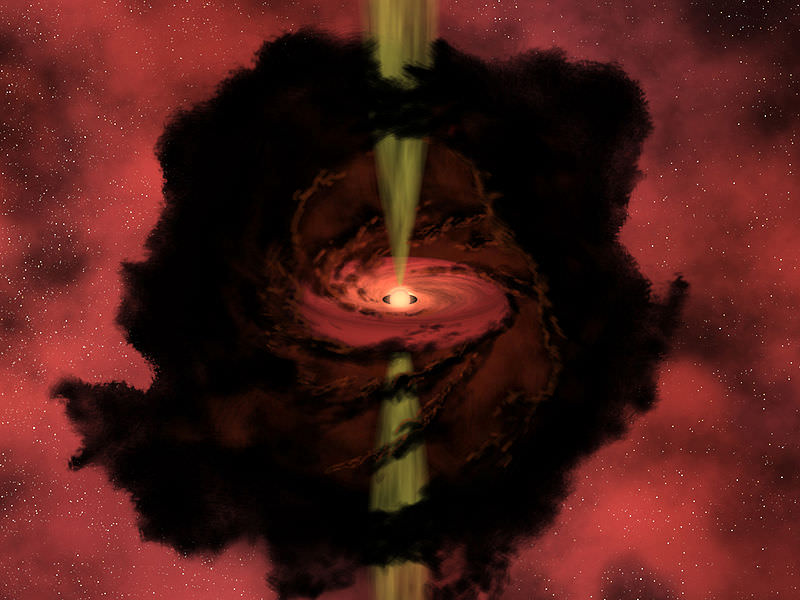[/caption]
A star will live the majority of its live in the main sequence phase. This is where nuclear fusion of hydrogen into helium is happening in its core, and the light pressure of this energy balances out the gravitational collapse of the star. Before a star gets into the main sequence phase, though, it spends some time as a protostar – a baby star.
Stars form when vast clouds of cold molecular hydrogen and helium collapse under mutual gravity. This collapse could have been triggered by a galaxy collision, or the shockwave of a nearby supernova. As the cloud collapses, it breaks into fragments, each of which will eventually become a star of some size.
As the cloud contracts, it begins to increase in temperature. This comes from the conversion of gravitational energy into kinetic energy. The cloud continues to heat up, and the conservation of momentum of all the different particles causes the protostar to spin.
The collapse of the cloud happens fastest at its center, where the material is at the highest density and hottest temperature. Unfortunately these objects are shrouded in dust, and impossible to see with Earth-based observatories. They can be seen in infrared telescopes though, which can pierce through the veil of dust that shrouds them.
As the collapse continues, a disk of gas forms around the protostar, and bi-polar jets blast out from the top and bottom of the star. These produce spectacular shock waves in the clouds.
An object can be considered a protostar as long as material is still falling inward. After about 100,000 years or so, the protostar stops growing and the disk of material surrounding it is destroyed by radiation. It then becomes a T Tauri star, and is visible to Earth-based telescopes.
We have written many articles about stars on Universe Today. Here’s one article about protostars, and here’s another.
Want more information on stars? Here’s Hubblesite’s News Releases about Stars, and more information from NASA’s imagine the Universe.
We have recorded several episodes of Astronomy Cast about stars. Here are two that you might find helpful: Episode 12: Where Do Baby Stars Come From, and Episode 13: Where Do Stars Go When they Die?

